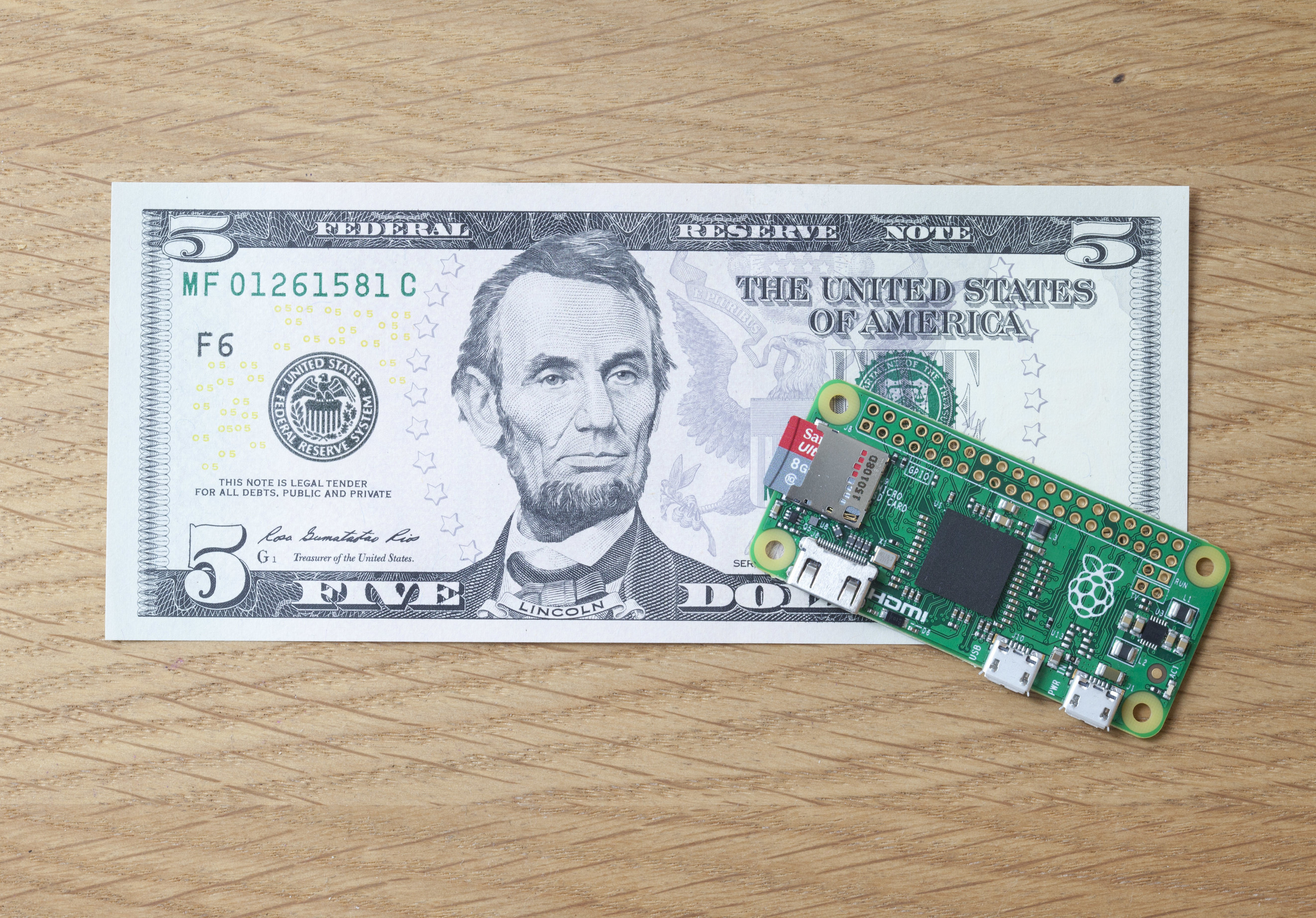Raspberry Pi Zero: the $5 computer
The original Raspberry Pi Model B and its successors put a programmable computer within reach of anyone with $20-35 to spend. Since 2012, millions of people have used a Raspberry Pi to get their first experience of programming, but we still meet people for whom cost remains a barrier to entry. At the start of this year, we began work on an even cheaper Raspberry Pi to help these people take the plunge.
Today, I’m pleased to be able to announce the immediate availability of Raspberry Pi Zero, made in Wales and priced at just $5. Zero is a full-fledged member of the Raspberry Pi family, featuring:
- A Broadcom BCM2835 application processor
- 1GHz ARM11 core (40% faster than Raspberry Pi 1)
- 512MB of LPDDR2 SDRAM
- A micro-SD card slot
- A mini-HDMI socket for 1080p60 video output
- Micro-USB sockets for data and power
- An unpopulated 40-pin GPIO header
- Identical pinout to Model A+/B+/2B
- An unpopulated composite video header
- Our smallest ever form factor, at 65mm x 30mm x 5mm
One more thing: because the only thing better than a $5 computer is a free computer, we are giving away a free Raspberry Pi Zero on the front of each copy of the December issue of The MagPi, which arrives in UK stores today. Russell, Rob and the team have been killing themselves putting this together, and we’re very pleased with how it’s turned out. The issue is jam-packed with everything you need to know about Zero, including a heap of project ideas, and an interview with Mike Stimson, who designed the board.


Comments
Post a Comment